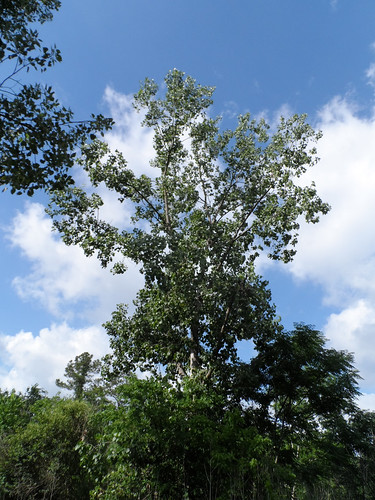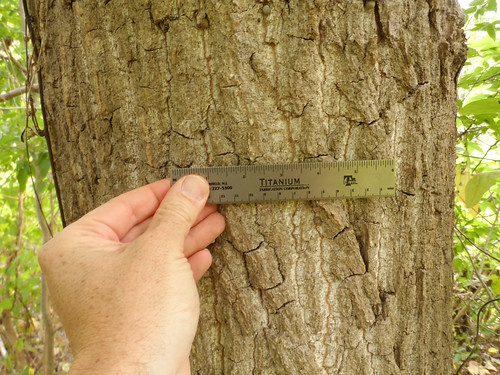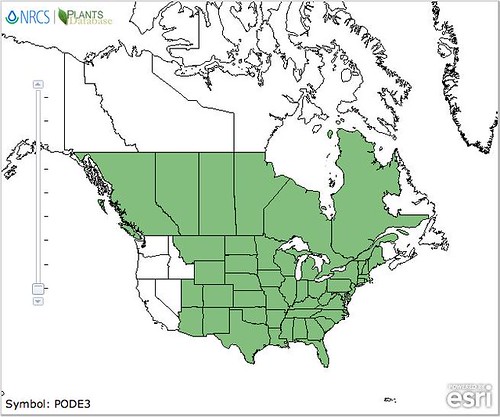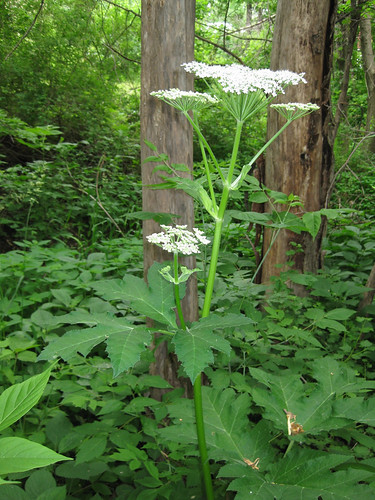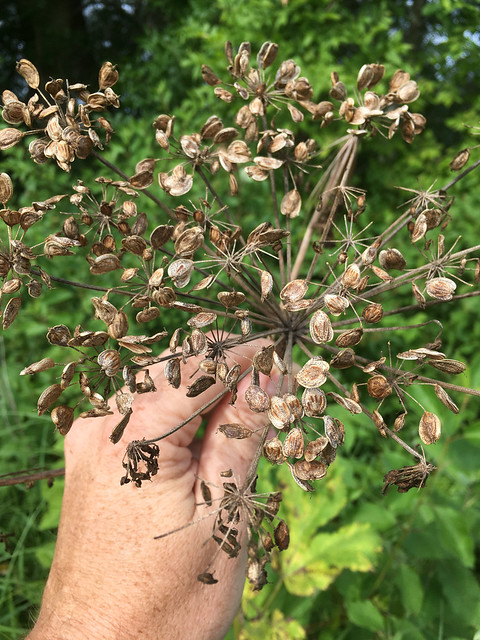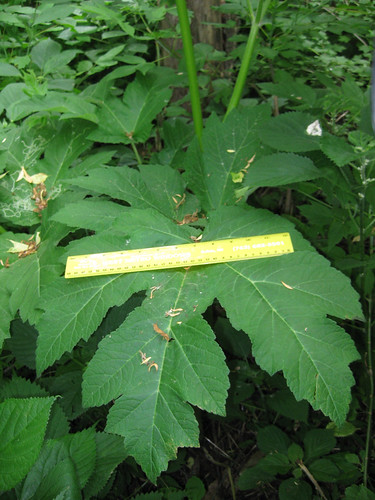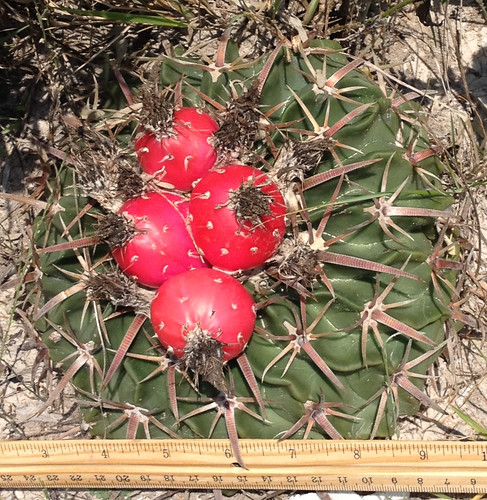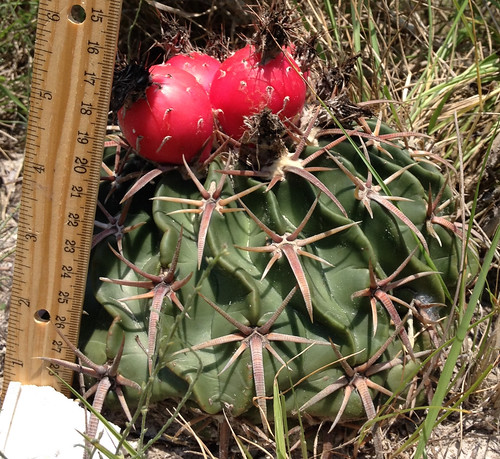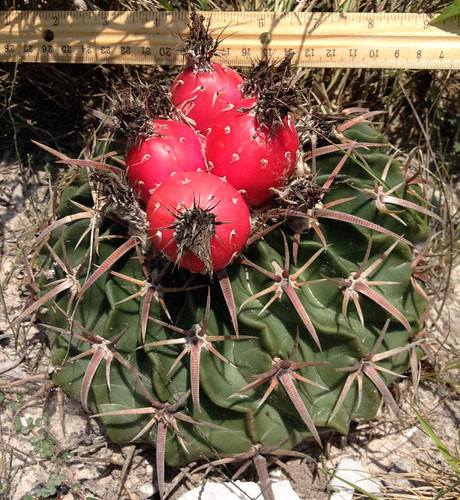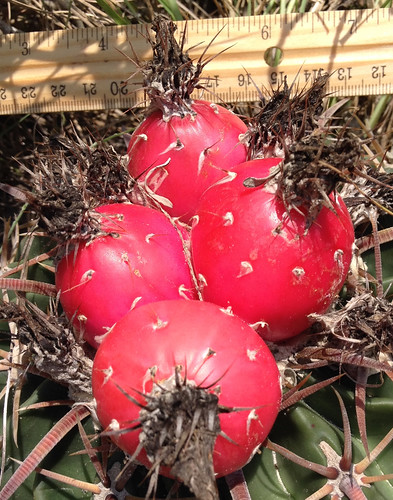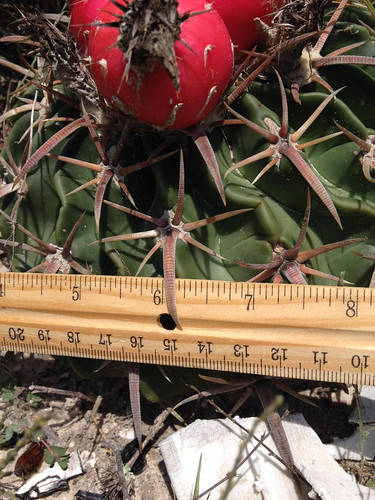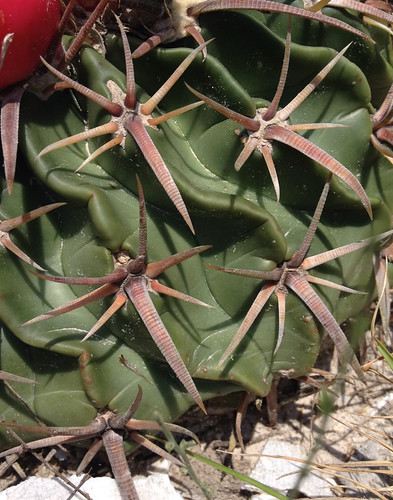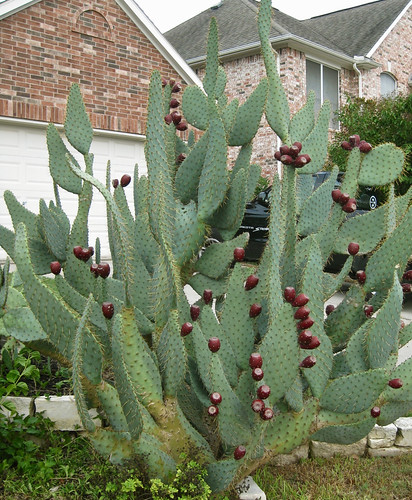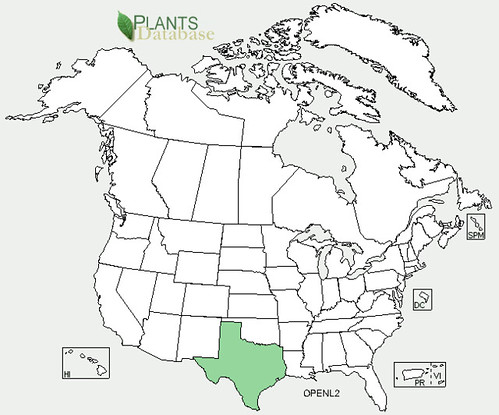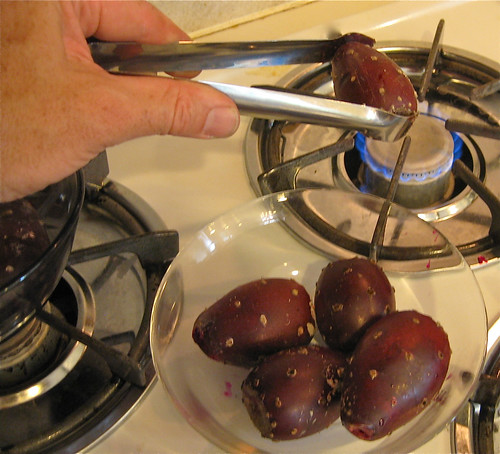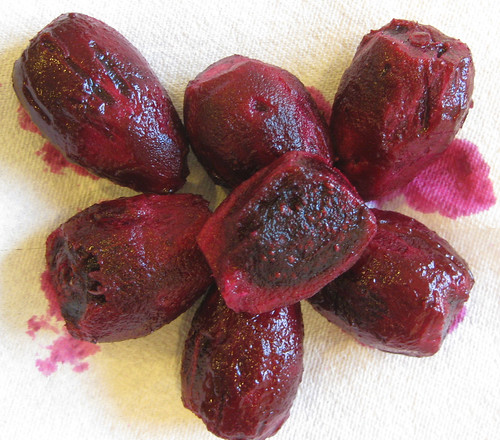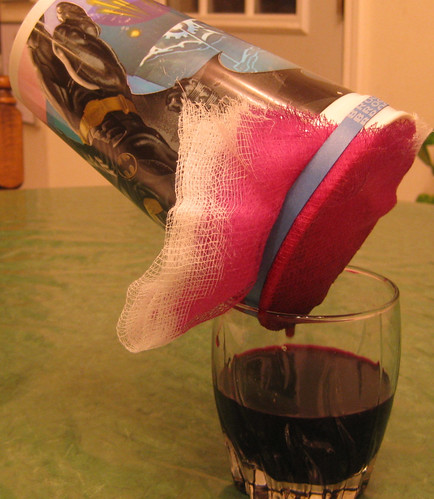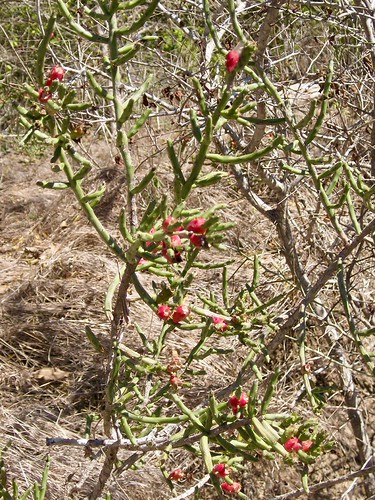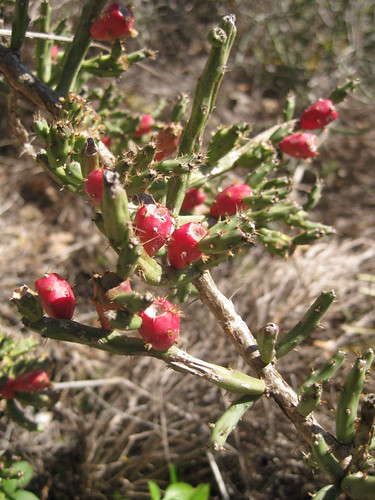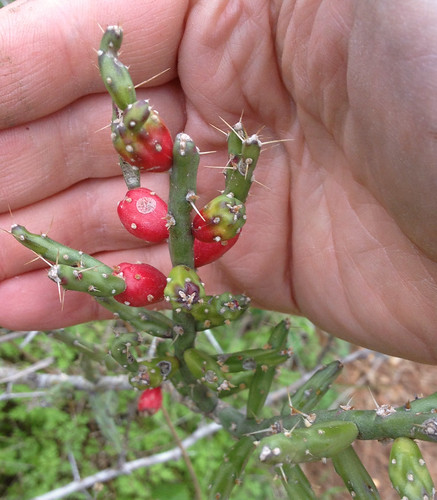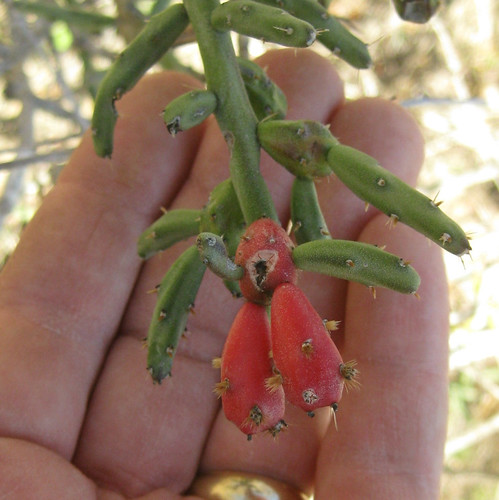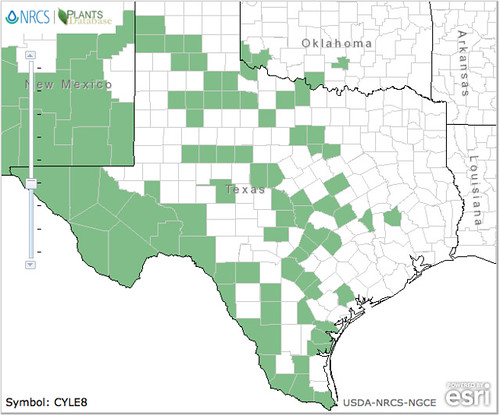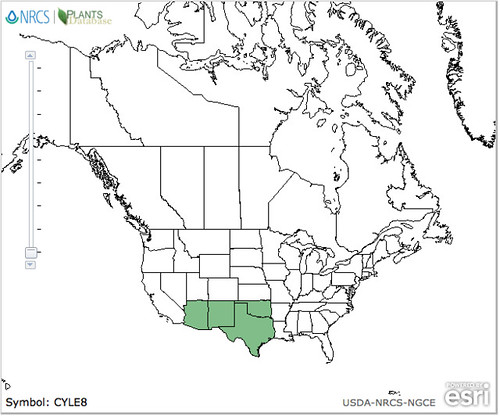Abundance: rare
What: leaves
How: raw or cooked when young before flowers appear
Where: moist shaded yards, borders, and woods
When: fall, winter (in Houston), spring
Nutritional Value: Vitamins A,Bs,C
Dangers: Beware the inedible, similar-looking Cudweed.
Young corn salad, ready for picking.
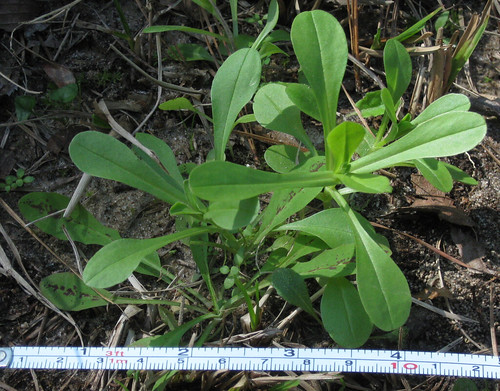
Mature Corn Salad (doesn't taste good at this point)

Close-up of Corn Salad flowers
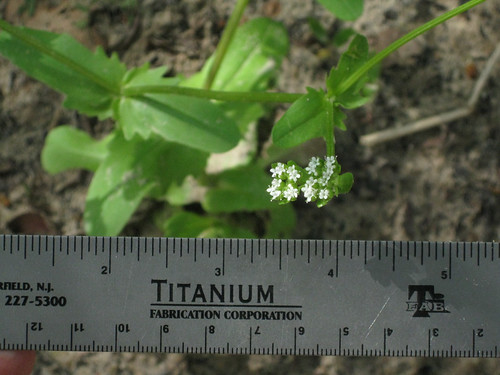
Close-up of the Corn Salad stem. Note how the stem leaves encircle the stem itself.
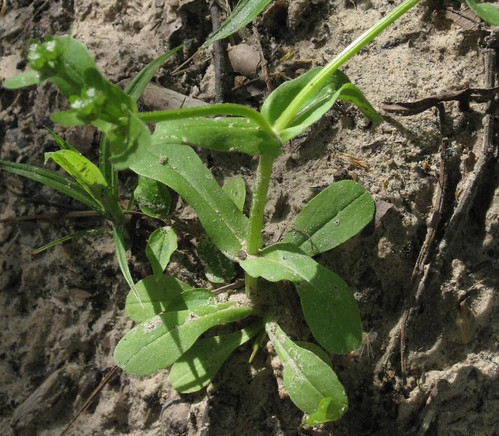
Texas distribution, attributed to U.S. Department of Agriculture.

North American Distribution, attributed to U.S. Department of Agriculture
Quickly sprouting up in late spring, Corn salad appears in sandy, shaded soil. It's delicate club-shaped leaves grow in an alternating opposite arrangement and that is when you want to eat it. In just a few weeks the plant's single stem will split into two stalks and then each of those will split into two more. Where the stem splits the leaves fuse into a single, pointy leaf surrounding the stem. At the top of the stalks a small cluster of white flowers appear, followed quickly by it going to seed. This plant grows and dies in just a few weeks.
Corn salad is not native to North America but came over with French settlers. It is a common, domestic salad vegetable in France. It has escape French gardens and can now be found in growing in thin stands in sandy, well-drained soil but needs a fair amount of moisture.
Be careful not to mistake Cudweed (Pseudognaphalium species) for Corn Salad. Picture below is the inedible (but medicinal and smokable) Cudweed. Note it has many more leaves than corn salad and the underside of the leaves are gray.

Buy my book! Outdoor Adventure Guides Foraging covers 70 of North America's tastiest and easy to find wild edibles shown with the same big pictures as here on the Foraging Texas website.



